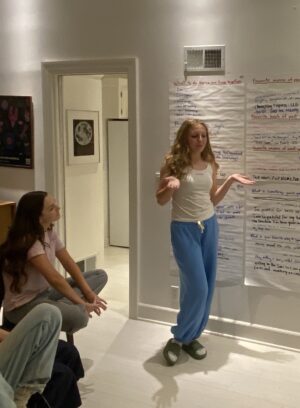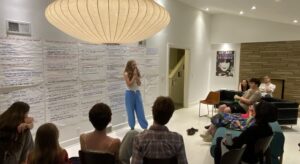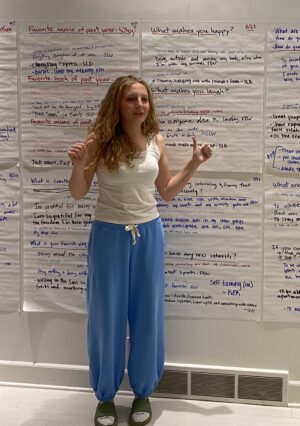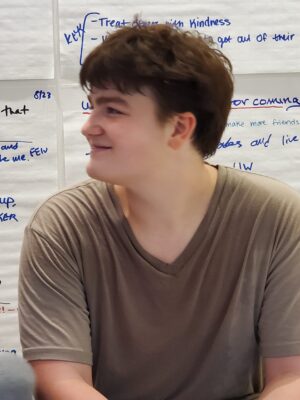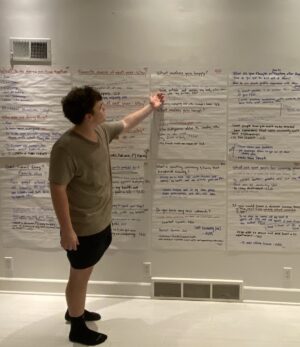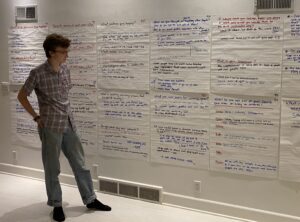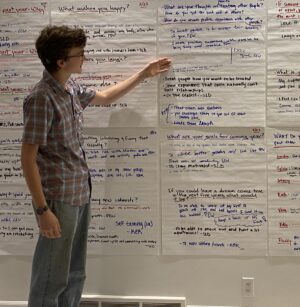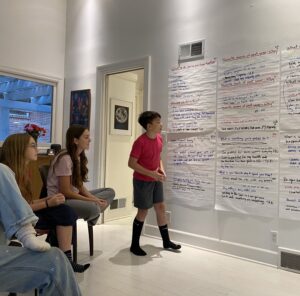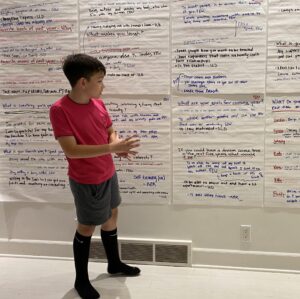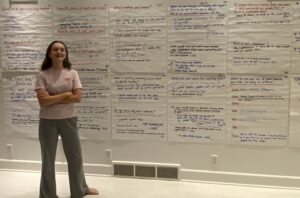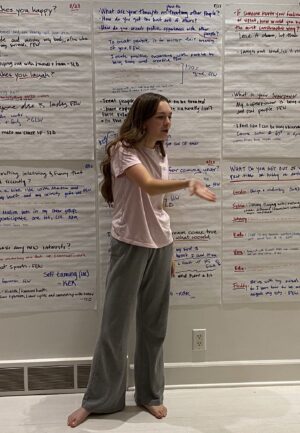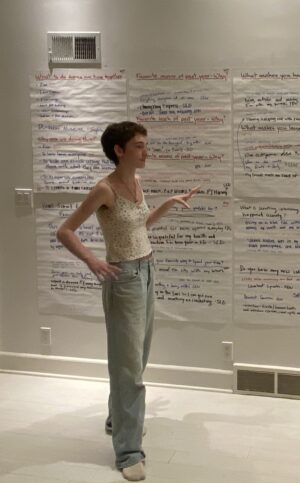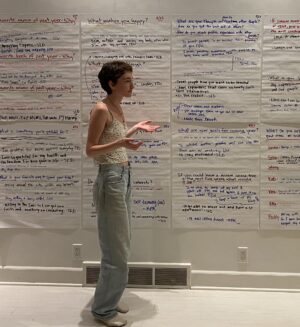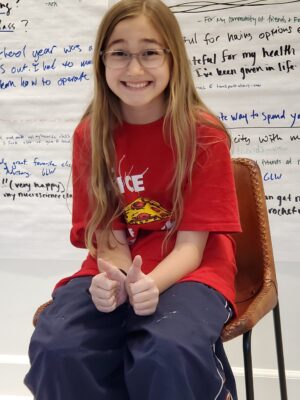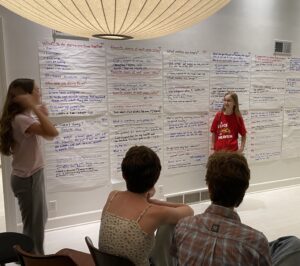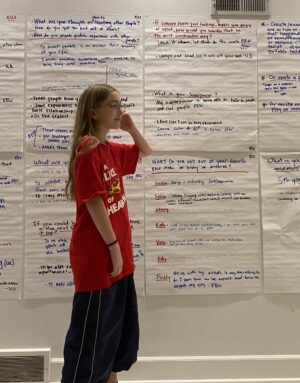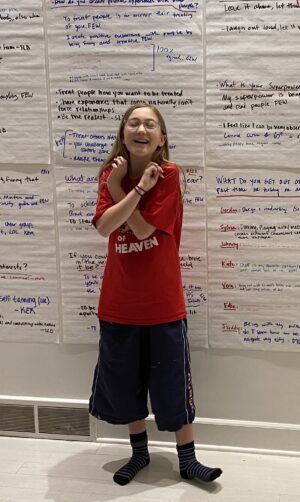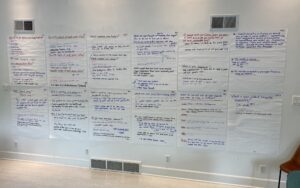Family
Summer, 2021: I imagine that the problem is a common one.
Families get together for the holidays or for a summer visit having not seen one another for months. Everyone looks forward to the visit but for some there could be apprehension. After all, these gatherings don’t always go well. Some people monopolize the conversation. Others never get a word in edgewise. Kids are relegated to their own devises, or they are given center stage as adults sit quietly.
Maybe it’s not that way. Maybe, instead, it’s simply that the conversation among family members remains shallow. People don’t really get to know one another. Who brought the casserole? I can’t believe how much you’ve grown! All of which is fine as far as it goes.
Of course, there are, sometimes, reasons for keeping things light at family gatherings. Politics, the religion of our time, can lead to sharp divisions in a family as readily as in a community or nation. There is also the trauma that may be buried in the family, unresolved anger and resentment, situations recent or long past that can explode if the wrong thing is said.
So, what is proposed here is not proposed naively or with the presumption that it can be used by all families. But it may be something useful to a number of families, something to experiment with and modify, as need be.
The process is simple…
My daughter and her husband acquired a home with a large wall that they had yet to use. In advance of our other daughter and her family arriving, I filled the white wall with large Post-It pages, sixteen in all. On each, I wrote a question.
These are the questions but any number of other questions could work just as well.
What can we do during our few days together? (This page was filled in advance and then added to as family members had ideas for possible activities.)
What is your favorite movie of the past year? Why?
What is your favorite book of the past year? Why?
How’s school going? Favorite classes?
The Pandemic: What changed in your life? What stayed the same? What was the most difficult part? How did you do with the adjustments? Was it hard?
G — How are your projects and experiments going? What have you learned?
L — Your travels? What did you discover? What did you learn?
The two older children, G and L, 16 and 19 respectively, were now engaged in special activities (experiments with plants and overseas travel) and we wanted to encourage them to share what they learned. (Families launch children into their own lives. The family is enriched and rewarded in return when children share what they have learned, what they have seen, how they have been changed as a result of their pursuits in the wider world.)
What is something you’re grateful for?
What is your favorite way to spend your time?
What makes you happy?
What makes you laugh?
What is something interesting and funny that happened recently?
Do you have any new interests?
What are your goals for the coming year?
What do you want to be when you grow up?
The following questions were meant to be playful, with answers already in mind regardless of the answers that might be written.
What’s everyone got to do?
What are butterflies?
What is lost by the bluebird when caged?
These questions gave us the opportunity to “plant seeds”, suggesting answers that provoke thought and perhaps cultivate a poetic sensibility. What’s everyone got to do? Elevate from the norm (Neil Peart). What are butterflies? Flowers liberated from the stem (Rudolph Steiner). What is lost by the bluebird when caged? Its color (Maurice Maeterlinck).
What are your thoughts on how to treat other people?
Reflect on your visit – what you liked the most? (We met a second time to share reflections on the visit, i.e., what they most liked doing, what they’ll remember, etc.)
Our gathering consisted of seven children (ages ranging from 8 to 19), four parents, two grandparents – thirteen in all.
For the first few days of the family gathering, family members were encouraged to write their answers in anticipation of the evening when they would share their answers. Everyone (adults and children) was told to initial or attach their name to their statements for future reference. Not everyone answered every question. Some questions were for the children only.
Sharing and updating
At the selected time, everyone gathers. If they haven’t as yet taken the time to write their answers to the questions, they do so now.
When done, everyone takes their seat.
The rules: Give your attention to each person as they speak. Enjoy what they have to say… see how it is interesting (it is interesting!). Don’t interrupt, though clarifying questions are fine. Applaud when the person is done if it seems right to do so (it probably does).
One by one, each person, starting with the children in our case, presents and explains their written responses. The idea, of course, is to have fun, to enjoy and find interesting what everyone has to say; and, in turn, for each person to experience themselves being heard, what they have to say valued.
After everyone has had the chance to speak, a more general discussion can proceed, the kids given room to ask questions. This can be an opportunity for the elders to weigh in—grandparents, for example—offering their best wishes for each child, what they see as unique to each child, each child with gifts of their own. All statements from the heart.
And that’s it…
Ideally, the process would be done annually. A brief review of what was said the previous year followed by some of the same questions and new ones, as well.
Perhaps one could say that this is “community-building”, “team-building”, perhaps even “values-clarification” work applied to the family. That would be true. And why not? Whatever methods build continuity and bonding are welcome. The family is the first organization of which most of us are a part. Recognizing and strengthening the capacities of those within it is one of its jobs.
The philosopher, Bruce Wilshire, put it this way: “The birthright of all humans should be the opportunity to develop each one’s capacities to the utmost, to experience the joy of having these capacities touched, educed, drawn out.”
The family plays a crucial role in the serving of this birthright. That is the aim of the family process described here. If done in earnest, with humor, ease, heartfelt involvement, it can’t help but serve that end.
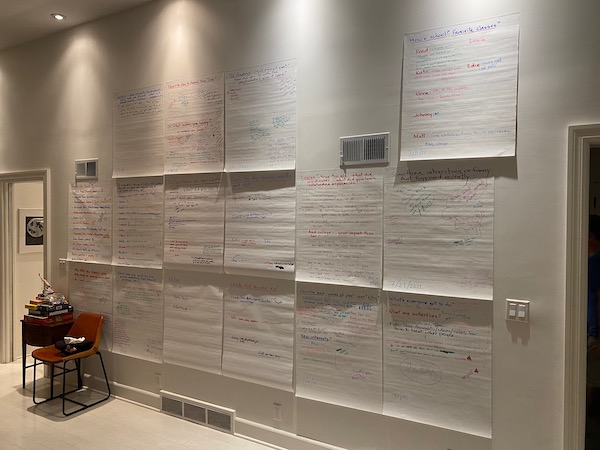

Two Years Later (Summer, 2023) —
Two years later, most of the same people gathered: five grandchildren (one couldn’t come) plus two friends, three of the four parents, one set of grandparents, a couple of guests.
Some of the same questions were asked with a few new questions added: Why are we doing this? What are your goals for the coming year? What do you get out of your favorite past time? What do you imagine you will be doing in ten years? How do you get the best out of others? What is your oldest favorite memory? If someone hurts your feelings, makes you angry or upset, how would you handle that in the most constructive way? If you could have a dream come true in the next five years of your life, what would it be? What is your superpower?
In addition, we added a performance feature/opportunity:
Create and enact a brief play or scene… one or two or more actors… something that happened at school or something that happened elsewhere or something you make up… humorous and/or something that you thought about, something that makes you think… You can hold and read the script…. Or recite a poem… Or recite/enact a passage from a play or movie…
Seek human wisdom and live up to it as best you can.
Vera (age 12): “Will do.”
One Year Later (Summer, 2024)
All grandkids came to town to attend my play, TIMETABLE. This gave us an opportunity to meet again briefly (minus Louise who had to return to Brooklyn for work) and continue the grandparents/grandchildren dialogue.
I gave copies of the Bob Marley lyric to each of them and asked them to read it aloud in unison.
“Life is one big road with lots of signs, So when you’re riding through the ruts, Don’t complicate your mind. Flee from hate, mischief, and jealousy. Don’t bury your thoughts. Put your vision to reality.”
I said that TIMETABLE was a big deal for me, a “vision” long in coming. They, too, I suggested, will have big ideas, “visions”, plans they will want to accomplish. So, the question is: What’s required to bring those “visions to reality”?
We went around the room, from youngest to oldest:
Johnny, age 11: Dedication. You’re going to make some mistakes. That’s okay.
Vera, age 12: I don’t have anything special to say. Just keep it simple. Be a good person. That works.
Fred, age 15: What Johnny said. Also, you have to be open-minded. No matter what you do, it will involve others.
Kate, age 16: Keep going. You may take some hits but you can’t let that stop you.
Gordon, age 20: It’s your habits. Develop the right habits and they will get you there.
For future reference should they care to think about it this way, there is this:
“The only conception of free will that remains meaningful in modern scientific psychology is this conception: When people act for the long-term good of themselves and their society, in cases where such acts conflict with their immediate and individual pleasures, they may meaningfully be said to be acting freely; …A person who does this is free from particular influences in the same sense that an ocean liner is free from the influence of small waves.” — Howard Rachlin, The Escape of the Mind


